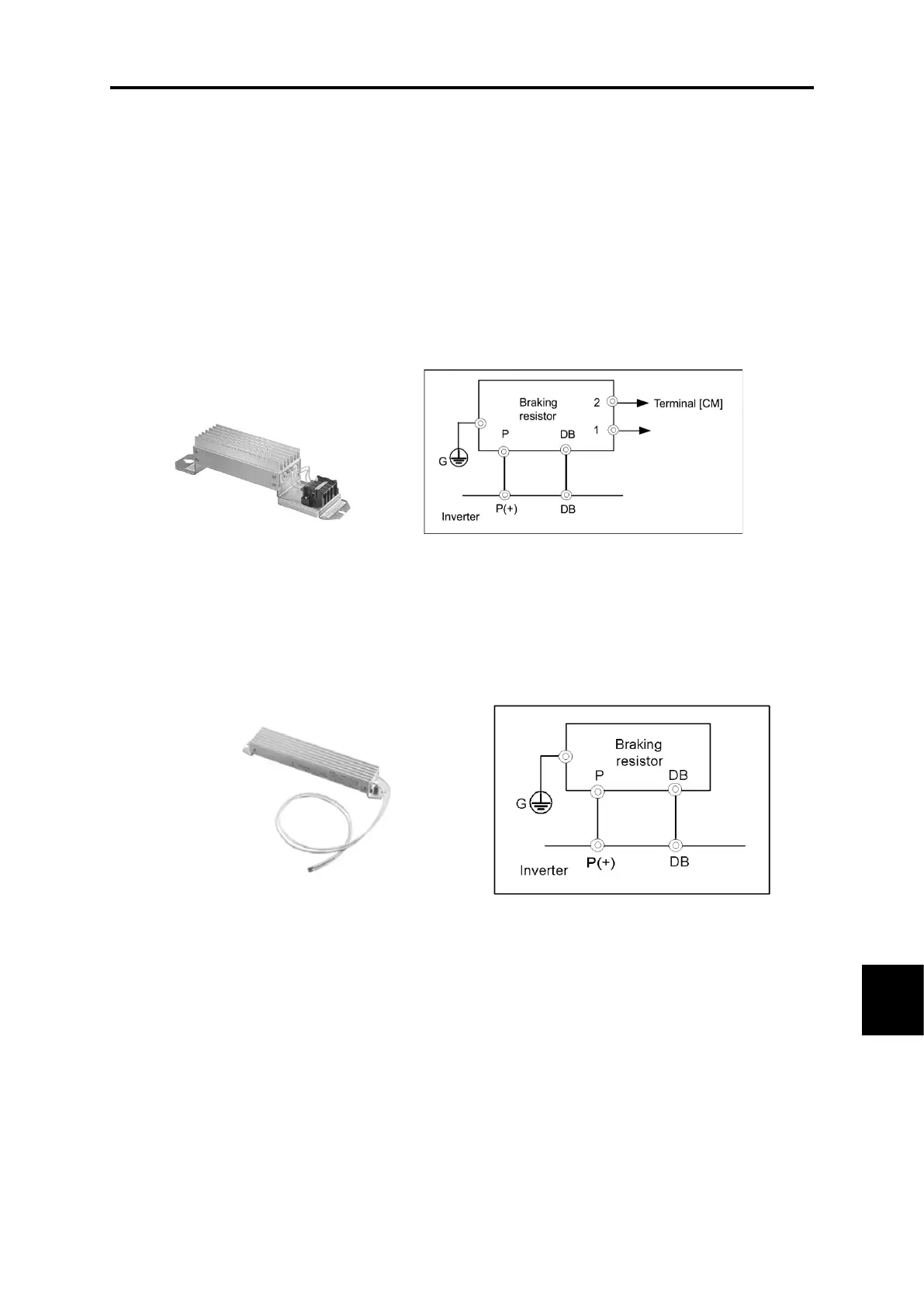11.8 Braking Resistors (DB) and Braking Units
11-17
SELECTING PERIPHERAL EQUIPMENT
11.8.2 Overview of Braking Resistors (DB) and Braking Units
A braking resistor converts regenerative energy generated from the deceleration of the motor to heat. Use of a
braking resistor results in improved deceleration performance of the inverter. FRENIC-MEGA (GS2) 200V series
FRN0288G2S-2G or lower models and 400V series FRN0180G2□-4G or lower models are equipped with built-in
braking resistor drive transistors, allowing braking resistors to be connected directly to the inverter.
[ 1 ] Standard type
The standard type is equipped with a function for outputting temperature detection signals. To detect temperature
detection signals with FRENIC-MEGA, assign external alarm “THR” to terminal [X1] to [X9], and connect to braking
resistor terminal 2 and terminal 1. Upon detection of the warning signal (preset detection level: 150 °C), the inverter
displays alarm 0H2 on the LED monitor and stops the alarm.
Fig. 11.8-2 Braking resistor (standard type) and connection example
[ 2 ] 10%ED type
The 10%ED type is not equipped with a function for outputting temperature detection signals, and therefore it is
necessary to specify electronic thermal overload relay function (function code F50, F51, F52) settings for braking
resistor protection.
Fig. 11.8-3 Braking resistor (10%ED type) and connection example
For the specifications and external dimensions, refer to “11.8.3 Specification” and “11.8.4 External
dimensions”.
Terminal [X1] to [X9]
(External alarm)
(“THR”)

